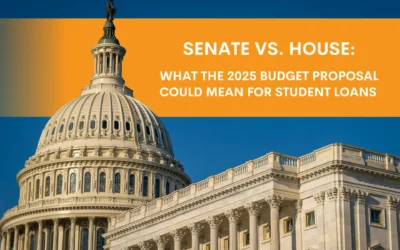Feb 5, 2020
It’s already that time of year, and we are receiving lots of questions from our clients about strategies for tax filing. While DWOQ isn’t a licensed tax advisory, we are intimately familiar with the student loan implications of tax filing for young graduate health professionals. In turn, we wanted to share considerations for those of you who are married, or plan to be in the coming years.
First, let’s look at the primary reason this is such a critical concern: Income Driven Payment plans, or IDRs. IBR, PAYE, and REPAYE help reduce required loan payments when a borrower has an unfavorable debt-to-income ratio. As the names imply, these plans base payments on income. Specifically, these plans consider your adjusted gross income (AGI) from the previous year. A deduction is made based on your family size to compute the Discretionary Income, and your annual payment is a percentage of that number. These plans can be particularly useful for those who are trying to maximize Federal subsidies and achieve loan forgiveness.
Generally speaking, the lower a person can keep their monthly payment amount, the greater forgiveness they can achieve. So what happens when someone gets married and files a joint tax return? Well, they’ll have a higher AGI if their spouse works, resulting in a higher payment, which in turn can result in reduced forgiveness and subsidy savings. Payments can be reduced in the IDRs not called REPAYE by filing taxes separately, but Married Filing Separately (or MFS) can also be costly in the form of higher taxes due as less deductions are available and new taxes can be triggered. Additionally, when filing MFS, only one spouse can claim dependents on the tax forms.
The specific IDR plan being utilized also plays an important role in this decision:
- Income Based Repayment (IBR) – The IBR plan was enacted by Congress as part of the College Cost Reduction and Access Act of 2007. The rules actually include a “special rule” allowing a borrower to use an MFS tax return for income-calculation purposes. If you are utilizing this plan, you can safely implement MFS as a long-term strategy, as it would take an act of congress to change the rules.
- Pay As You Earn (PAYE) – PAYE was created by president Obama in 2012, via Executive Order. This plan also allows for MFS tax returns to be used for payment calculation. However, because PAYE did not go through the congressional lawmaking process, it is not protected the way IBR is protected. Another president could amend the rules for this plan.
- Revised Pay As You Earn (REPAYE) – REPAYE was established by the Department of Education in October 2015, in response to President Obama’s June 2014 Presidential Memorandum. Aware that borrowers were using the MFS tax strategy to reduce their payments, the Department of Education put specific language into the rules for REPAYE to stop this from happening. If a borrower is married, their joint household income must be used for the discretionary income and payment calculation. The tax-filing status is irrelevant.
When trying to decide if MFS is a good strategy, two sets of analyses must be completed. First, you need to run analysis on the student loans using married and individual incomes. Consider the difference in payment amounts, monthly, annually, and over the life of the loan. Also consider the gain in subsidy benefits, and the increased loan forgiveness amount. Finally, deduct any potential tax liability, as applicable for the forgiveness option you are pursuing. You may find this analysis is a bit difficult using the various student loan calculators available online, but not to worry… DWOQ has developed a proprietary calculator specifically for this purpose.
Once your loan repayment analysis is complete, you need to run tax projections. For most borrowers, MFS will result in a higher tax liability. A good rule of thumb is that if the annual reduction in loan payments is greater than the increase in the tax liability, then MFS may be a good way to go for that year. That said, one must consider the end goal. Simply reducing your loan payments during a year does not necessarily save you money, particularly if your lower payments aren’t covering your accruing interest. Those pursuing forgiveness, on the other hand, will drive greater savings by applying this strategy.
If you’re married to another borrower, you’ll have slightly different considerations. If you file MFJ, you will be assessed a “household” payment responsibility, based on 10 or 15% of discretionary income, depending upon which plan you are utilizing. From there, each spouse’s portion of the payment is calculated based on their portion of the loan debt, not their portion of the income.
At first, this gives the impression you can have your cake and eat it too, as you get a “fair” payment amount while also claiming all the benefits of MFJ. This is not always the case however. If each spouse applies for PAYE on their own, they each have the ability to deduct $17,655 from their AGI to reduce their discretionary income figure for payment calculation. If they are using joint income, however, they may only deduct $23,895 from the household AGI. That results in the household discretionary income being increased by $11,415. As before, we recommend you run the numbers for both MFJ and MFS, and then compare it with the tax filing considerations.
Here’s a sample analysis and recommendation we made to a medical resident with $220k in federal debt, pursuing Public Service Loan Forgiveness (PSLF), who marries a PA making $90k per year in a for-profit physician’s practice. The spouse also has $85k in 6.5% federal student loan debt:
In this case, we don’t just look at student loan debt in a vacuum, rather we take into account the financial profile of the borrowers. Any way we sliced it, our PA was best served refinancing to a private lender where lower rates are available if her credit history is favorable. Our doctor, on the other hand, could take on a higher payment in REPAYE, or switch to PAYE to increase forgiveness. Moving to PAYE would require MFS in future years to maximize PSLF savings.
If all of this isn’t complex enough for you, let’s dig a little deeper: If you live in a “Community Property” state, you are also subject to special tax laws that apply to married couples. There are nine of these states: AZ, CA, ID, LA, NV, NM, TX, WA, and WI. When couples live in community property states, they can file MFS, but it results in a 50/50 split of the household income. Thus, a resident making $50k who is married to someone making $100k would report $75k on their tax return. That said, if it makes sense to reduce your IDR payment further, you can utilize a paper application process to submit your pay stubs in lieu of your tax returns, and may still be able to lock in an IDR payment based on $50k. In the rare cases that couples reside in different states, the borrower’s state of residence usually dictates the tax rules to be followed.
We hope that you found this summary helpful. Certainly, the considerations around tax filing for married borrowers can get complicated, and that’s why we are here to help. Please contact us directly or register for a consultation if you have further questions.
Brandon Barfield is the President and Co-Founder of Student Loan Professor, and is nationally known as student loan expert for graduate health professions. Since 2011, Brandon has given hundreds of loan repayment presentations for schools, hospitals, and medical conferences across the country. With his diverse background in financial aid, financial planning and student loan advisory, Brandon has a broad understanding of the intricacies surrounding student loans, loan repayment strategies, and how they should be considered when graduates make other financial decisions.





